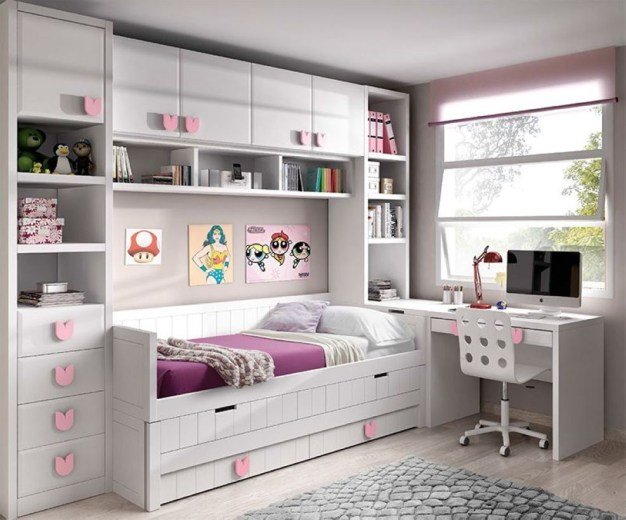Secrets Unveiled: How Can I Make My Bedroom More Relaxing?
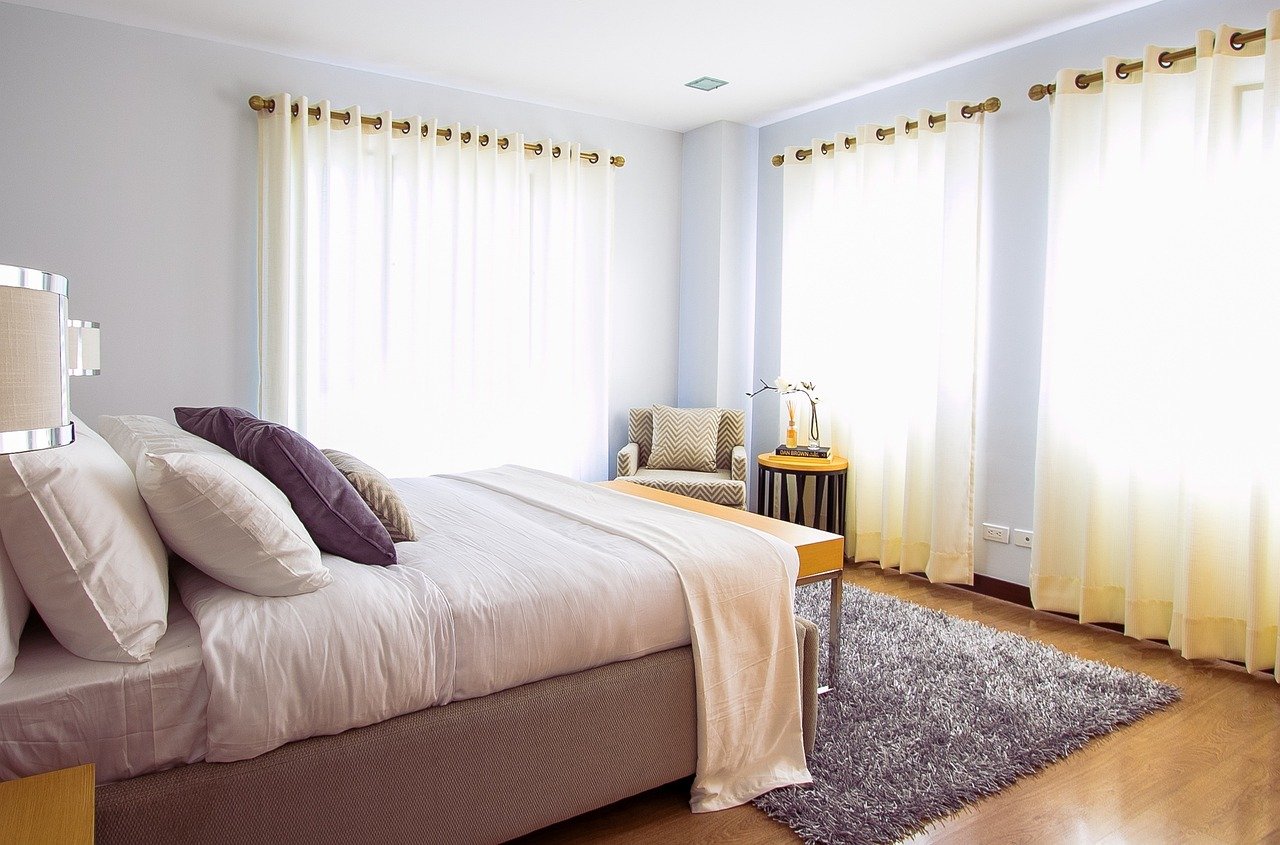
Do you often ask yourself, ‘How can I make my bedroom more relaxing?’ Having a peaceful, relaxing bedroom can feel like the ultimate reward after a long day. A sanctuary of retreat, providing us with comfort and respite from stress-inducing stimuli. Whether you’re looking to create an entirely new look for your space or just add some zen touches to make it more inviting, some simple methods can turn any bedroom into a restful oasis.
To help kick-start your journey towards creating the perfect paradise in which to relax, I will discuss some tips on making your bedroom more calming and rejuvenating.
Evaluate Your Current Bedroom Setup
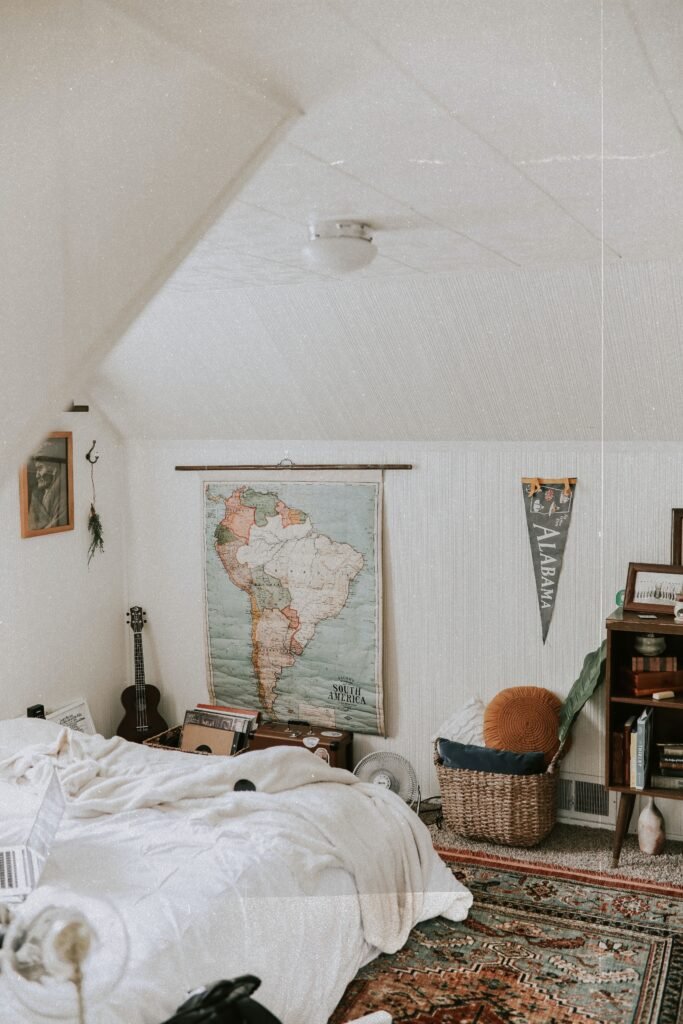
There’s so much we can do to make it feel more tranquil, yet sometimes, the most effective changes come from assessing what’s not working and what is. Here’s how to get started:
🏚 Assess The Current State of Your Bedroom
Begin by conducting a thorough evaluation of your current bedroom setup. Examine the furniture arrangement, your chosen color scheme, and the presence of clutter.
Are there items that constantly draw your attention and disrupt your focus? Do the colors appear too vibrant, too dull, or simply unsuitable? Are you easily overwhelmed by laundry heaps, book stacks, or an overflowing closet? These factors can contribute to restlessness rather than relaxation.
Take a moment to observe and contemplate these aspects. Document your preferences and dislikes. This assessment will serve as your blueprint for implementing changes. Keep in mind that the ultimate aim is to craft a space that exudes tranquility and soothes your senses. Therefore, your personal tastes and comfort should serve as your guiding principles throughout the decision-making process.
🏚 Identify Aspects That Contribute To Stress or Discomfort
The next step in creating a soothing bedroom environment is identifying elements contributing to stress or discomfort. Here are some common aspects to consider:
🔆 Clutter
An untidy room can lead to a cluttered mind. Clutter disrupts the harmony of a space, leading to stress and anxiety. Make it a habit to keep your bedroom clean and organized. Regular decluttering and investing in smart storage solutions can do wonders for your well-being.
🔆 Lighting
The lighting in your bedroom can significantly impact your mood and sleep quality. Bright, harsh lights can make it difficult to wind down at the end of the day. Opt for warm, soft lighting to create a tranquil ambiance. Consider using dimmers or installing lamps with adjustable brightness.
🔆 Noise
Noise can be a significant factor contributing to restlessness. If you live in a noisy environment, consider investing in soundproofing solutions or a white noise machine. Earplugs can also be a simple, cost-effective option.
🔆 Color scheme
Colors can profoundly affect our emotions. Bright, bold colors may stimulate activity and energy but are not ideal for a restful bedroom environment. Choose serene and soothing colors like soft blues, greens, or neutrals to promote relaxation.
🔆 Furniture arrangement
The arrangement of your furniture can influence the flow of energy in the room. Try to maintain a clear path for movement and position your bed towards the door, but not directly in line with it, for a sense of security and calm. Experiment with different arrangements to find what feels best for you.
🏚 Determine Your Personal Relaxation Goals
What soothes one person might not always work for another, hence the importance of personalization. Start by identifying what makes you feel calm and serene. It could be the sight of a certain color, the sound of soft music, or the scent of lavender. Incorporate elements that cater to your senses.
For instance, if you find the sight of greenery relaxing, consider adding indoor plants to your space. If certain scents soothe you, aromatherapy candles or essential oil diffusers can be a great addition. Personal relics like photographs or mementos can also bring comfort.
Remember, the key to a relaxing bedroom is to make it uniquely yours. It’s not just about designing a beautiful room but about creating a sanctuary that resonates with your inner sense of peace.
Declutter and Organize
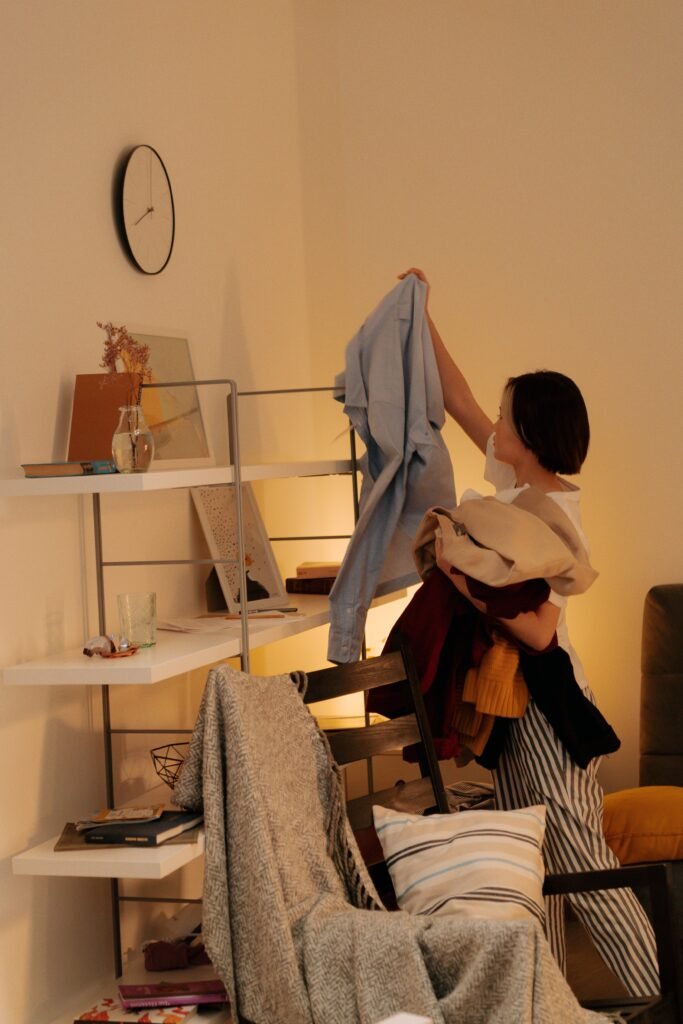
Creating a relaxing bedroom starts with eliminating chaos. Clutter creates a messy environment and can lead to mental clutter, disrupting your peace and relaxation. Here are some tips for decluttering your bedroom:
📚 Sorting and purging unnecessary items
Start by examining each item in your bedroom. If you have not used it in a long time and don’t foresee its use, it’s time to let it go. Donate, sell, or recycle items you no longer need. This process might seem daunting at first, but the result — a decluttered space — is worth the effort.
📚 Storage solutions
Utilize storage solutions like under-the-bed storage boxes, closet organizers, or floating shelves to store your belongings neatly. Hidden storage solutions such as ottomans or storage beds can also work wonders in keeping your room clutter-free.
Organizing your belongings for easy access and tidiness is the next step. Arrange your items in a way that makes sense to you. You could group similar items together or arrange your belongings based on frequency of use, with the most commonly used items within easy reach.
Remember, the objective is to reduce the time and effort needed to locate items. The more organized your room, the more serene and relaxing it will feel. Stick to a regular cleaning schedule to maintain the organization and cleanliness of your bedroom.
Create a Calming Color Scheme

The color scheme of your room significantly influences the overall ambiance and your mood.
🔴 Choosing Soothing Colors for Your Bedroom
Opt for soothing colors that promote relaxation and tranquility. Soft shades like pastel greens, blues, or lilacs can create a calm atmosphere. Neutral tones such as white, beige, or grey can also impart a sense of serenity.
🔴 Coordinating Wall Paint, Bedding, and Decor
To create a harmonious look in your bedroom, coordinate your wall paint with your bedding and decor. The color of your bedspread, pillows, curtains, rugs, and wall art should complement your wall color, enhancing the calming effect.
🔴 The Psychological Impact of Colors on Relaxation
Colors significantly influence our emotions and mood. For instance, blue is often linked with tranquility and calm, while green is associated with nature and renewal, promoting relaxation.
On the other hand, bright colors like red or yellow, while vibrant and energetic, may not be the best choice for a peaceful bedroom environment. Choosing the right color scheme can transform your bedroom into a relaxing sanctuary where you can unwind after a long day.
Adjust Lighting for Ambiance
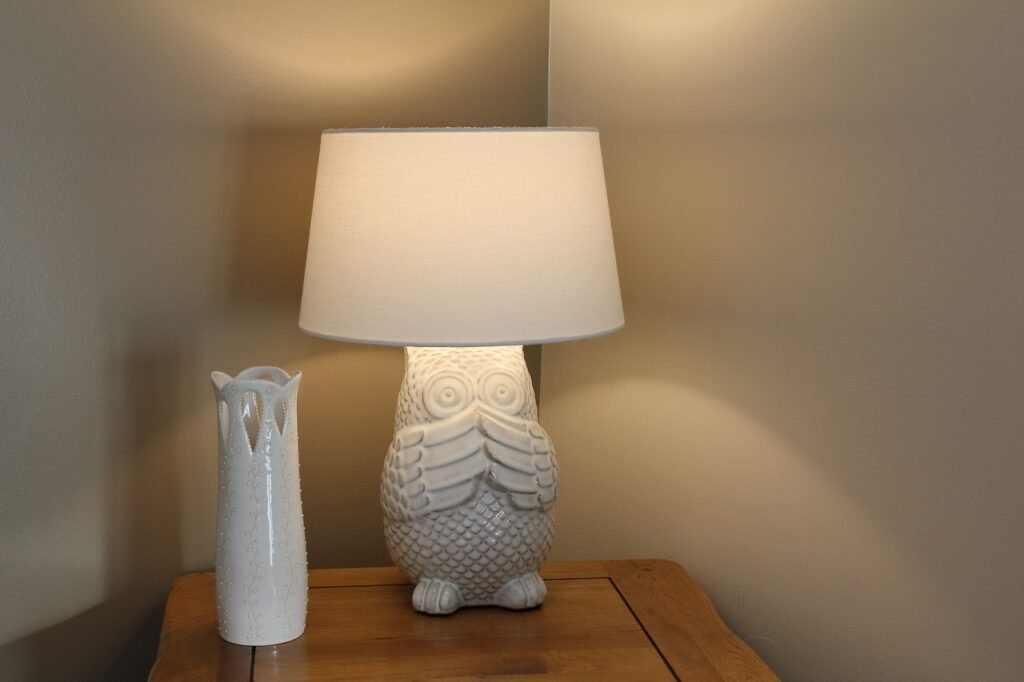
Lighting plays a critical role in setting the mood and ambiance in your bedroom, directly impacting your sense of relaxation.
🔆 Natural Light and Blackout Curtains
During the day, harness the power of natural light, letting it flood your space with its warm, inviting glow. Natural light can uplift your mood and make your room feel more open and airy. However, blackout curtains are a must-have when it’s time to sleep. They block out any external light, be it streetlights or the morning sun, ensuring a dark, conducive environment for sleep.
🔆 Soft and Adjustable Artificial Lighting
For the evenings, select soft and adjustable artificial lighting. Instead of stark, bright lights, opt for warm, diffused lights that can make your room feel cozy and peaceful. Consider installing lights with dimmers so you can control the brightness according to your preference and the time of day.
🔆 Candles and Dimmer Switches
Candles can add an element of tranquility to your bedroom with their gentle, flickering light and calming scents. However, remember to blow them out before you go to sleep for safety reasons. Similarly, dimmer switches allow you to adjust your lights to a low, soothing level for the evenings, further enhancing the relaxing atmosphere.
By thoughtfully adjusting the lighting in your room, you can significantly enhance its ambiance, making it a more relaxing and comfortable haven.
Soundproof and Minimize Noise

External noise, whether it’s traffic, noisy neighbors, or the hum of appliances, can disrupt your tranquility. Here are some ways to make your room a quiet retreat:
🔕 Install Soundproofing Materials
There are numerous soundproofing materials available in the market, such as acoustic panels, insulating foam, or soundproof curtains. These can be installed on your walls, ceiling, or windows to significantly reduce the influx of external noise.
🔕 Use White Noise
A steady, consistent sound, like that of a fan or a white noise machine, can help mask disruptive noises. Certain apps and devices can also generate soothing sounds like rainfall or ocean waves, promoting relaxation and sleep.
🔕 Invest in Quality Windows and Doors
Double-glazed windows and solid doors can keep much external noise at bay. They may be an investment, but the peace and quiet you’ll enjoy are well worth it.
🔕 Seal Gaps and Cracks
Oftentimes, noise seeps through gaps and cracks around windows, doors, and even electrical outlets. Sealing these openings with weatherstripping or insulating foam can help minimize noise intrusion.
Invest in Comfortable Bedding and Furniture

Your bed is the centerpiece of your bedroom, and choosing a comfortable mattress and pillows is crucial for a good night’s sleep. Look into different types of mattresses – memory foam, latex, innerspring, and hybrid – and choose one that best suits your sleep style and preferences. Similarly, consider pillows that adequately support your head and neck, reducing the risk of aches and discomfort.
Moreover, the material of your bedding can significantly affect your comfort and sleep quality. Opt for natural, breathable fabrics like cotton or bamboo, which are soft, hypoallergenic, and regulate temperature well. Avoid synthetic materials, which can trap heat and lead to discomfort during the night.
In addition to your bed, other furniture in your bedroom should also contribute to its relaxing ambiance. Choose ergonomic furniture that supports your posture and minimizes the risk of strain or discomfort. Consider a cozy chair for reading, a well-lit desk for work or study, and ample storage to avoid clutter.
Lastly, make your bedroom your own by incorporating personal touches and sentimental items. Display photos, artwork, or collectibles that bring you joy. Add soft rugs, throw pillows, or blankets in your favorite colors. These elements will make your bedroom feel more familiar and comforting, further enhancing its relaxing atmosphere.
Incorporate Relaxing Decor and Accessories
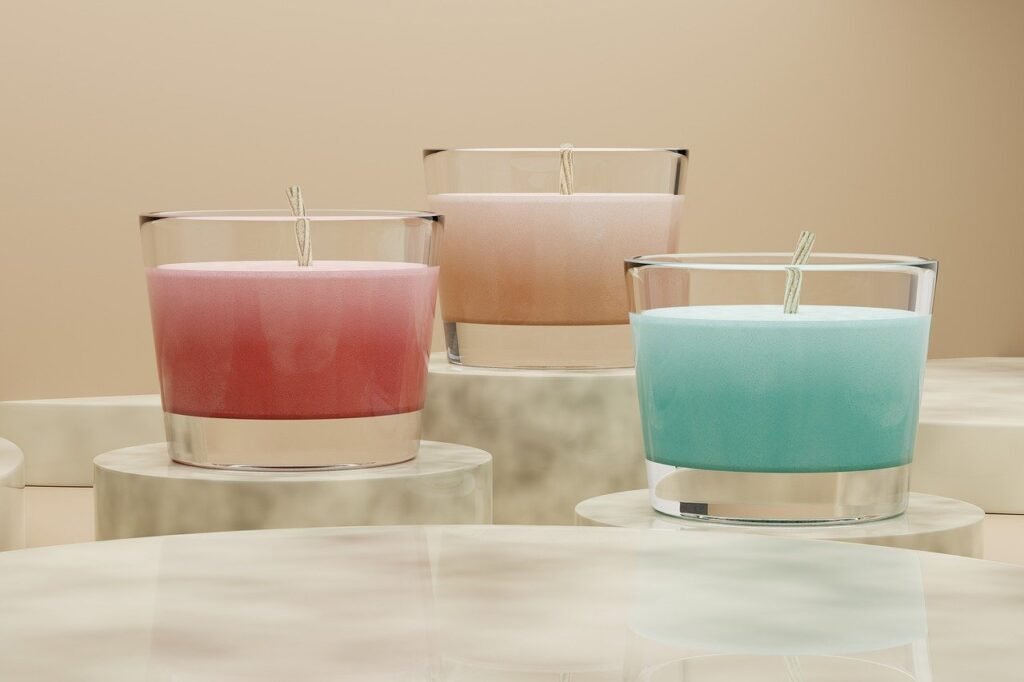
To enhance the tranquility of your personal space, consider adorning your walls with art and decorations that evoke calm and serenity. Artworks depicting serene landscapes, abstracts in soothing color palettes, or inspirational quotes can transform your room into a stress-free sanctuary.
Indoor plants add a touch of life and nature to your bedroom, boosting mood and purifying air. Research shows that indoor plants like lavender, jasmine, or snake plants can improve sleep quality. Aromatherapy, another powerful tool for relaxation, can be seamlessly incorporated into your bedroom decor.
Essential oil diffusers or scented candles with fragrances like lavender, chamomile, or bergamot can create a calming atmosphere, aiding in stress relief and sleep. Lastly, the texture of your decor also plays a significant role in creating a cozy, welcoming environment.
Consider adding soft textiles such as plush rugs, cozy blankets, and throw pillows in calming tones. These tactile elements add warmth and comfort to your space, making it an ideal place for relaxation.
Maintain Cleanliness and Order

Establishing a routine for cleaning and tidying your room significantly contributes to your overall sense of relaxation. A clutter-free environment appeals to the eye and has a calming effect on the mind. Try to develop a daily habit of returning things to their place immediately after use.
Allocate specific places for your belongings, making finding them easier and preventing clutter from building up. Consider doing a deep clean of your room weekly, which can involve dusting, vacuuming, and washing your linens.
The impact of cleanliness on relaxation is profound, backed by scientific research. Psychologists equate a neat and clean environment with feelings of accomplishment and control, reducing anxiety and stress levels. A tidy room allows you to focus on relaxation and rest rather than being distracted or overwhelmed by a chaotic environment.
Therefore, maintaining cleanliness and order in your bedroom is a vital step towards creating a more relaxing space. Remember, your bedroom should be a sanctuary. In this place, you can unwind, recharge, and escape from the pressures of the outside world. Creating and maintaining a clean, comfortable, and personalized space can significantly assist in achieving this.
Personalize Your Space

Incorporating personal touches into your bedroom is a wonderful way to create a relaxing environment that reflects you. Start by surrounding yourself with items that bring you joy. This could range from books and artwork to souvenirs from travels or cherished photographs. These items can be positive reminders of happy memories and personal achievements, fostering a sense of peace and contentment.
Consider showcasing meaningful mementos to you, perhaps arranging them on a shelf or a bedside table. These could be small trinkets from significant moments in your life, gifts from loved ones, or sentimental keepsakes. They add character to your room and create a personal narrative that is uniquely yours.
When choosing decorations, opt for those that reflect your interests and passions. Suppose you’re a lover of nature, for instance. In that case, you should incorporate botanical prints or potted plants into your room design. If you’re an avid reader, you could consider creating a cozy reading nook.
Furthermore, displaying photos can add a warm, intimate touch to your room. They can be cherished memories frozen in time, showcasing loved ones, favorite places, or memorable events. Try creating a photo wall or a collage that tells your story.
Remember, your bedroom is an extension of yourself. Each piece you introduce contributes to creating a space where you can feel utterly at ease, allowing you to relax and recharge in a room that resonates with your personality.
Establish a Relaxation Routine

A consistent bedtime routine can enhance sleep quality and foster relaxation. This routine should ideally begin an hour before your intended sleep time and incorporate activities that signal your body that it’s time to wind down. Activities could include reading a book, taking a warm bath, or practicing yoga.
Meditation and deep breathing exercises are excellent relaxation techniques for your routine. Meditation can help quiet the mind, reducing the mental chatter that often keeps people awake. Similarly, deep breathing exercises can help reduce stress and create a sense of calm, preparing the body for sleep.
The role of technology, specifically screen time, in the bedroom can harm sleep quality. The blue light emitted from screens can interfere with the production of the sleep hormone melatonin. Therefore, part of your bedtime routine should be to switch off electronic devices at least an hour before bed. If this is not feasible, consider using apps or settings that filter blue light.
Frequently Asked Questions
Q: Why is it important to have a consistent sleep routine?
A consistent sleep routine signals your body when it’s time to rest. Over time, this can help you fall asleep more easily and improve your sleep quality.
Q: Can the layout of my bedroom furniture affect my sleep?
Yes, the arrangement of your bedroom furniture can influence your sleep. For instance, ensuring your bed is not facing direct light can help create a more comfortable sleeping environment.
Q: What types of lighting should I use in my bedroom?
Warm, soft lighting is best for bedrooms. Avoid harsh, bright lights, as they can interfere with your ability to wind down before bed.
Q: What colors are most calming for a bedroom?
Cool tones like blues, greens, and grays are considered calming and are ideal for a bedroom.
Q: What can I do if I find it hard to unwind before bed?
If you have trouble unwinding, consider relaxation techniques like meditation or deep breathing exercises. Also, ensure your bedroom environment is conducive to relaxation.
Conclusion
Ultimately, creating a peaceful and calming bedroom oasis doesn’t have to be difficult. There are many simple ways to create a relaxing bedroom environment, whether it’s decluttering your bedroom, bringing in some plants and diffusing essential oils, or simply incorporating lighter colors into your space. Take the time to experiment with different options and see which one resonates best with you.
As life can get chaotic so often, it’s important to give yourself the extra time to relax, even if it means spending 10 minutes at the end of each day just focusing on calming your mind and body. So go ahead and make that cozy corner everyone dreams of because you will have an inviting bedroom that helps foster relaxation, and a more balanced and chill lifestyle awaits you.

